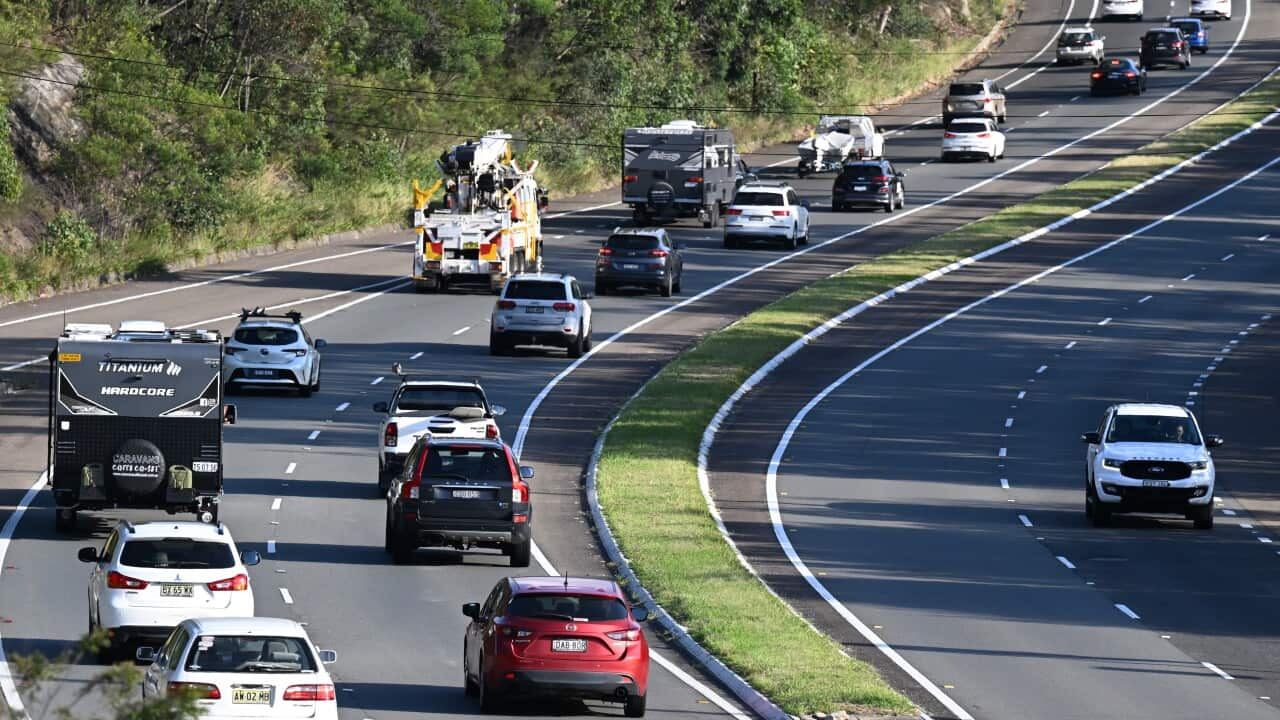Key Points
- NSW will trial average safety cameras along two stretches of highway.
- Speeding drivers will receive written warnings for the first 60 days before penalties kick in.
- Any future decision to make the trial permanent will require the state parliament’s approval.
The speed of all drivers, not just truckies, will be tracked through average-speed camera zones as part of a NSW trial.
But don’t expect a fine in the mail if you mess up in the trial’s early days.
Australia’s biggest jurisdiction has announced it would cease being a global outlier on point-to-point speed detection and its heavy-vehicles-only policy.
Average speed cameras, also known as point-to-point cameras, average the speed travelled over a section of road between two cameras. It is considered a fairer form of speed enforcement than a single-point camera.
Speeding drivers will receive written warnings for the first 60 days before financial and licence penalties kick in.
All other mainland Australian states and countries like the UK, Norway, Italy and the Netherlands had found average speed cameras to be effective, Roads Minister John Graham said.
John Graham says the trial was a recommendation of a road safety forum involving 155 experts. Source: AAP / Bianca De Marchi
“We aim to be as rigorous as possible to be sure they will also reduce road trauma in NSW,” he said on Sunday.
“NSW is the only jurisdiction in the world to use average speed cameras but restrict their use to heavy vehicles only.
“In the context of , now is the time to trial these cameras for light vehicles and understand if we can keep more people safe on the road more of the time.”
The trial and the toll
An all-driver approach will be trialled along two stretches of highway — a 15-kilometre stretch of the Pacific Highway between Kew and Lake Innes on the mid-north coast and a similar length of the Hume Highway, north of Gundagai.
Six people have died and 33 more were seriously injured in the five years to 2022 at those locations.
The measure was one of several recommended outcomes from a road safety forum in Sydney in April involving 155 experts.
Any future decision to make the trial permanent, or roll out to NSW’s 35 other average-speed zones, will also require the parliament’s approval. A comprehensive communications campaign will also be rolled out to inform drivers about it.
In 2023, speeding contributed to 44 per cent of road deaths in NSW, three-quarters of which were in regional NSW.
There were 358 road fatalities in the previous financial year, an 11.7 per cent increase from the year prior,
The AAA found that NSW was the most deadly state or territory for road users, making up 27.3 per cent of the 1,310 road fatalities recorded nationally.
Experts praise new trial
Peter Frazer, who founded Safer Australian Roads and Highways after his daughter Sarah died on her way to university in 2012, said the organisation had long lobbied NSW to change its approach.
“These cameras promote safer driving habits by encouraging drivers and riders to stick to the speed limit,” he said.
Professor Rebecca Ivers, head of the School of Population Health at UNSW Medicine & Health, welcomed the new speed camera trial.
“Average speed cameras are used widely in other settings to manage speeding behaviour with great success, and their use has been shown to lead to significant reductions in road crashes and deaths” said Ivers.
Research has shown the use of average speed cameras reduces fatal and serious crashes by 25-46 per cent, Ivers said.
They also provide other benefits such as smoothing traffic flow, as more people travel at a uniform speed, which can reduce rear-end collisions.
Ivers said, “Speed is a factor in at least 40 per cent of road fatalities and is of particular concern in rural and remote parts of the state, which account for nearly 70 per cent of the road toll.
“Road safety experts have been calling for the introduction of average speed cameras for light vehicles in NSW for many years. It is such a cheap and cost-effective way to reduce deaths on our roads.”
Despite Sunday’s change, NSW will remain an outlier on another road speed approach.
Drivers in NSW get on approach to fixed and mobile .
The stance backed by the government and motoring groups has been panned for “” by the head of the Australasian College of Road Safety.

